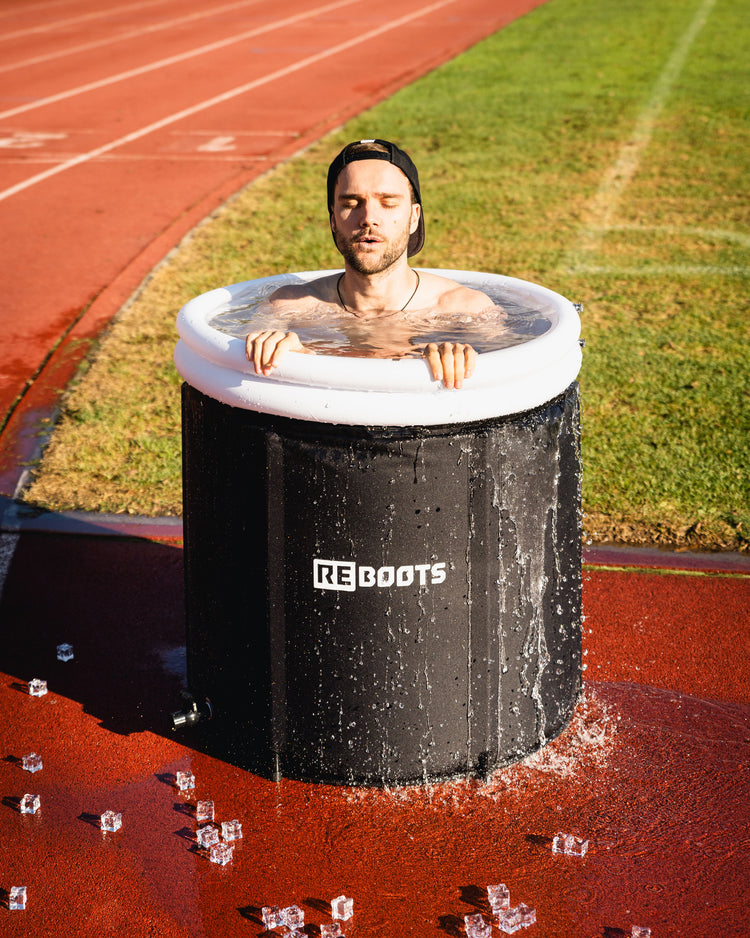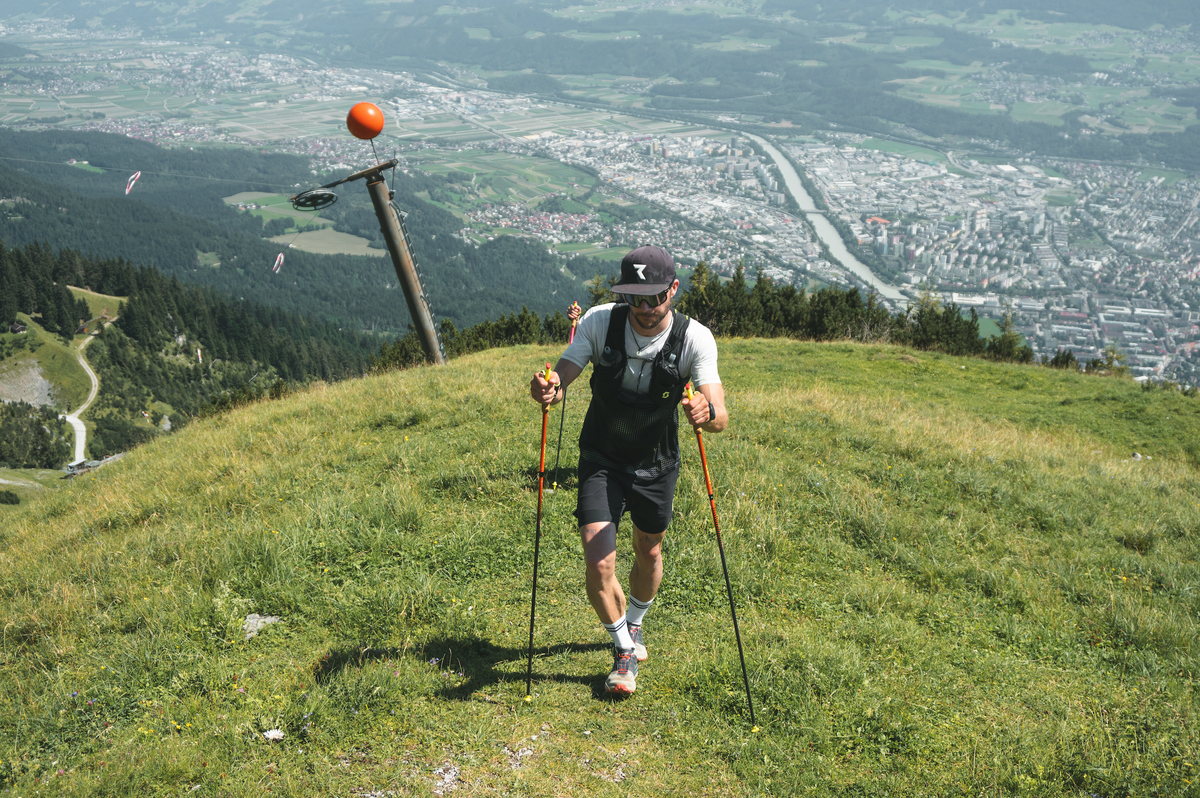Ultratrail, bike and ski everesting, long-distance triathlon – 2025 is the year of sporting diversity for Jan. Between peaks, marathon kilometers, and long-distance training, he relies on consistent regeneration. Because those who train at top level for months need more than strength – they need balance between exertion and recovery.
Preparation for the long distance – more than just training
Preparing for a long-distance event requires careful planning. Jan divides his year into clearly structured phases:
- Build-up: Basic endurance, technique, stability.
- Intensification: Specific sessions, long brick workouts, high load.
- Tapering: Reduction of training volume, focus on recovery.
Especially in the second phase, when training and competitions overlap, it becomes clear: Recovery is the limiting factor. Without targeted recovery, performance decreases – and the risk of overload increases.
For Jan, there is a fourth discipline besides swimming, cycling, and running: recovery.
Regeneration as the fourth discipline
Why Recovery is Crucial
Sleep, nutrition, and active recovery form the foundation on which performance can truly develop. Only those who regularly recover can handle high training volumes in the long run.
Mental Regeneration
Not just the body, but the mind also needs breaks. After long training weeks, Jan takes conscious timeouts to maintain focus and motivation—whether it's a walk, yoga, or simply an evening without thoughts of sports.
Tools & routines in Jan's everyday life

Recovery Boots & compression massage
A central part of his routine is Recovery Boots with intermittent pneumatic compression (IPC). They create a wave-like pressure massage that feels pleasant and activating. Jan uses them regularly after long sessions or intense training days – especially in triathlon preparation.

Cold therapy
Ice baths or short cold sessions help him reduce feelings of tension and wind down the body – especially after competitions or heat stress.
Mobility & Fascia Work
A few minutes of stretching or mobility work are part of Jan's daily routine. It keeps his flexibility and body awareness stable, even during intense phases.
Sleep & Tracking
Sleep is the most important recovery tool for Jan. He uses sleep tracking apps to focus on quality and duration—not perfection, but consistency.
Nutrition & Micronutrients
After weeks of intense training, Jan relies on anti-inflammatory foods, plenty of water, electrolytes, and enough protein. For him, recovery often starts at the dining table.
The day after the race – what really matters
After an ultratrail or a long-distance event, there's initially emptiness – both physically and mentally. Jan describes the day after as a phase of conscious winding down.
He focuses on:
- light movement like walking or easy cycling,
- adequate sleep,
- and targeted nutrition to replenish energy stores.
Only then does he slowly start the comeback phase: short, controlled sessions, accompanied by recovery routines.
Long-term Recovery & Annual Planning
After every major goal, Jan takes longer breaks – sometimes several weeks without structured training. He uses this time to gain mental distance and allow his body to fully recover. Afterwards, he starts the build-up phase with renewed energy – motivated, focused, and resilient for the entire season.
Jan's most important learnings:
- Regeneration is not a luxury, but training.
- Small routines are more sustainable than infrequent, long breaks.
- Balance matters more than perfection – to stay strong, you need rest as much as stimuli.
"I've learned that progress only happens when you take recovery as seriously as training. Recovery is not an extra – it's the foundation."
Whether it's an ultratrail, cycling marathon, or triathlon: Jan's year shows that recovery is the crucial fourth discipline in endurance sports. With clear routines, conscious breaks, and smart tools, it's possible to stay strong in the long run.






